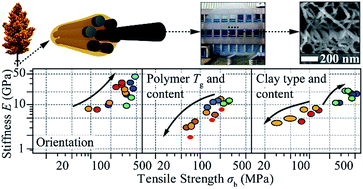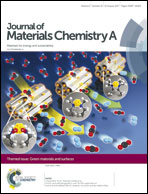Cellulose nanofibril nanopapers and bioinspired nanocomposites: a review to understand the mechanical property space
Abstract
Cellulose nanofibrils (CNFs) emerge as a renewable and sustainable feedstock for future biobased high-performance materials with environmentally friendly character. They allow for the formation of pure nanopapers or can be integrated into bioinspired nanocomposites leading to excellent multifunctional properties. CNFs feature outstanding intrinsic mechanical properties due to their high crystallinity (high specific stiffness and strength), attractive nanoscale dimensions, and high surface areas suitable for chemical functionalization. The focus of this review is to discuss the current state of the art and understanding of mechanical performance, and to derive general implications for developing future CNF-based nanopapers, as well as nanocomposites with high fractions of reinforcements featuring rationally designed and improved property profiles. We discuss the influence of various intercorrelated parameters: fibril chemistry, crystallinity, aspect ratio, degree of polymerization, colloidal stability and film formation, as well as integration with different counterions, polymers and nanoclays. We attempt to dissect these factors by focusing on the most comprehensive studies that allow deriving rational design criteria based on thoroughly validated experimental protocols.

- This article is part of the themed collections: Recent Review Articles, 2017 Journal of Materials Chemistry A HOT Papers and Green Materials and Surfaces


 Please wait while we load your content...
Please wait while we load your content...